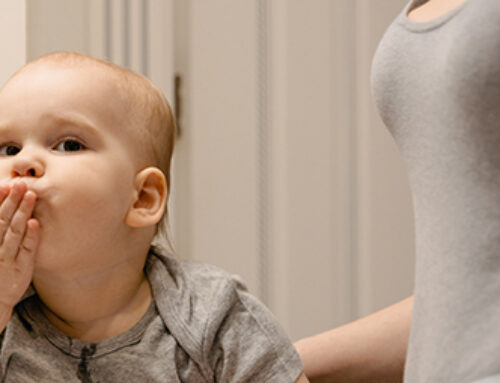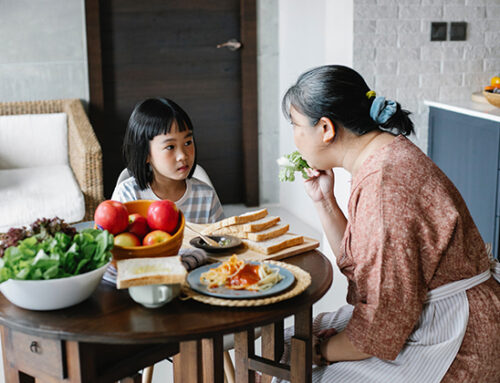Differentiating communication, language, and speech can be confusing for many. While these concepts may sound similar, at their core, they are quite different.
Communication is anything that a child does to elicit a response from another person. This response could be tangible (such as receiving an object) or social (such as a smile or laugh). Communication includes spoken language, as well as non-verbal cues, such as vocalizations, eye contact, gestures, body language, and facial expressions, which are necessary to accurately convey a message when interacting with others. An example of communication might be a child pointing at a favorite toy or smiling in response to a favorite song. Foundational communication skills include joint attention, initiation, engagement, use of gestures, and social reciprocity. These are all important precursors for language and cognitive development. This blog will explain the foundations of communication and their importance for language development.

- Joint attention is defined as the shared focus of two individuals on an object, and occurs when one individual alerts another to an object through either verbal or non-verbal (eye-gaze, pointing) indications. For example, joint attention is demonstrated when a child follows his parent’s pointed finger in a picture book and looks between the picture and his parent as if to say, “I see the picture too!”
- Initiation is defined as spontaneously approaching another person to engage in an interaction. For example, initiation is demonstrated when a child grabs a parent’s hand and brings them to a toy.
- Engagement is defined as a child’s ability to attend to or be interested in a task or activity with another person; For example, joint engagement is demonstrated when a child and parent play peek-a-boo together, clap in unison to a song, or read a familiar story.
- Gestures are defined as actions or movements used with the intention to communicate an idea or meaning. Typically, gestures are made with our hands, for example waving hello or goodbye, but can also include facial expressions or body movements, for example a child turning his head away to refuse a food at mealtime.
- Social reciprocity refers to a child’s ability to participate in the back-and-forth flow of social communication, whether it be through babbling, gestures, facial expressions, or words, and is closely related to engagement.

A great way to target these foundational communication skills is through play! Children of all ages learn through the process of playing – it is one of the most important ways in which they learn about their world. Research shows that play is not just play; instead, it represents early communication and social relationships, and can be a useful tool to support language development. The development of joint attention, imitation, and toy play are all early predictors of later communication development.
Language refers to the words we use and how we use them to share ideas and get what we want (including what words mean, how to make new words, putting words together, and knowing what to say at different times). When children have difficulty understanding what others say, they may have a receptive language disorder. Children who have difficulty sharing thoughts, ideas, and feelings may have an expressive language disorder. Expressive language can take many forms, including verbal speech, signs, pictures, and speech-generating devices.
Speech refers to the action of how we produce sounds and words, and includes articulation, voice, and fluency (all defined below). When children have difficulty saying specific sounds, stutter when they speak, are difficult to understand, or speak with an abnormal pitch or loudness, they may have a speech disorder.

Blue Bird Day fosters socialization, sensory regulation, and pre-academic learning in children ages 2-7 years in therapeutic rotations that simulate preschool and kindergarten settings. Our compassionate therapists practice a relationship-based and family-centered approach, provide parent training, and collaborate on goals and individualized intensive treatment plans for your child.
We believe in a collaborative and multi-disciplinary team approach to therapy. A team of occupational therapists, speech-language pathologists, dietitians, developmental therapists, behavioral therapists, physical therapists, and therapeutic assistants are created for each child to ensure child and family are fully supported and the best possible results are achieved.
Options for individualized, group and virtual therapy sessions are available as well.
Want to learn more or you have a specific question? Feel free to connect with us here!



